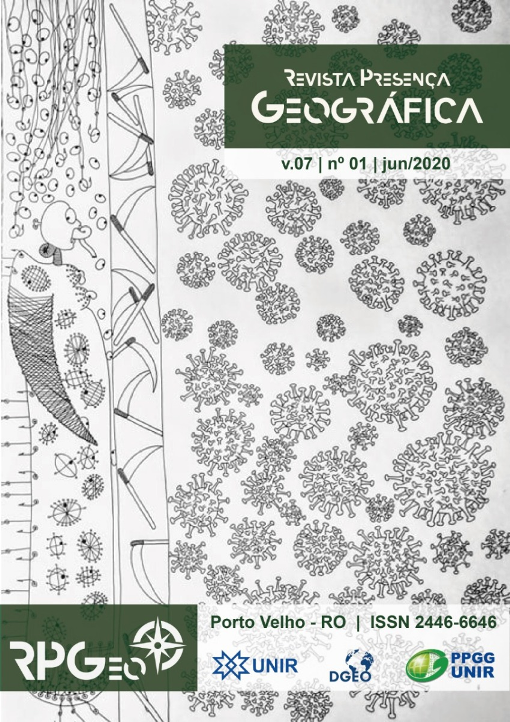PERCEPÇÃO AMBIENTAL SOBRE O RESERVATÓRIO DE PATAXÓ (IPANGUAÇU/RN)
DOI:
https://doi.org/10.36026/rpgeo.v7i1.4989Palavras-chave:
Reservas hídricas, Mapeamento participativo, Mapas Mentais.Resumo
Na região nordeste do Brasil, especificamente no semiárido, foi implantada a política de construção de reservatórios como solução hidráulica, suprindo a escassez de água ocasionada pelas secas frequentes, fator característico desta região. Os primeiros açudes públicos foram construídos a partir de 1890 no estado do Ceará. Entre 1951 a 1954, foi construído pelo DNOCS o açude Pataxó para o abastecimento da população do município de Ipanguaçu/RN, possibilitando o crescimento populacional e surgimento das comunidades do seu entorno: Pataxó e São Miguel, onde foram realizadas uma pesquisa para analisar a relação entre as comunidades citadas e o reservatório. Como aporte metodológico foi empregada à metodologia Kozel (2007) apresentando formas de interpretação e decodificação de mapas, no qual as comunidades elaboraram mapas mentais participativo. Foram recolhidos relatos dos moradores para o delineamento do perfil socioeconômico de ambos, assim como os principais usos da água do açude nas comunidades de Pataxó e São Miguel estão destinados para o abastecimento humano no consumo e uso domiciliar, dessedentação animal e irrigação. Sendo as principais atividades econômicas agricultura e pesca. Os resultados possibilitaram compreender a percepção ambiental dos moradores que demonstraram afeto e apego em relação ao lugar de moradia, no qual depositavam suas esperanças no reservatório para a sobrevivência e geração de renda.
Publicado
Edição
Seção
Licença
Este obra está licenciado com uma Licença Creative Commons Atribuição-NãoComercial-SemDerivações 4.0 Internacional.
Autores que publicam nesta revista concordam com os seguintes termos:
- Autores mantém os direitos autorais e concedem à revista o direito de primeira publicação, com o trabalho simultaneamente licenciado sob a Creative Commons Atribuição-NãoComercial-SemDerivações 4.0 Internacional que permite o compartilhamento do trabalho com reconhecimento da autoria e publicação inicial nesta revista.
- Autores têm autorização para assumir contratos adicionais separadamente, para distribuição não-exclusiva da versão do trabalho publicada nesta revista (ex.: publicar em repositório institucional ou como capítulo de livro), com reconhecimento de autoria e publicação inicial nesta revista.
- Autores têm permissão e são estimulados a publicar e distribuir seu trabalho online (ex.: em repositórios institucionais ou na sua página pessoal) a qualquer ponto antes ou durante o processo editorial, já que isso pode gerar alterações produtivas, bem como aumentar o impacto e a citação do trabalho publicado (Veja O Efeito do Acesso Livre).







